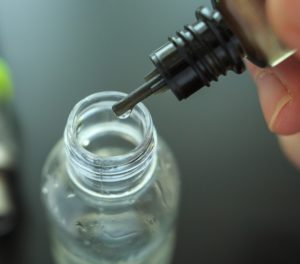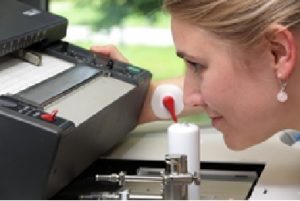User Behavior
Human Thresholds for Characterizing Flavors and Impact on Behavior
Richard O’Connor, Roswell Park Comprehensive Cancer Center
 Flavors are common in electronic nicotine delivery systems (ENDS) and are often named as a primary reason for their use. The goal of this study is to evaluate whether flavors might have “indirect” toxicity: that is, regardless of whether flavorings show biological evidence of toxicity, they may increase harm by other means, such as increasing appeal, decreasing risk perceptions, or masking harshness or irritation that might lead users to discontinue use.
Flavors are common in electronic nicotine delivery systems (ENDS) and are often named as a primary reason for their use. The goal of this study is to evaluate whether flavors might have “indirect” toxicity: that is, regardless of whether flavorings show biological evidence of toxicity, they may increase harm by other means, such as increasing appeal, decreasing risk perceptions, or masking harshness or irritation that might lead users to discontinue use.
Study aims are:
(1) to develop expert (trained per industry best practices) and consumer (untrained) sensory panels to identify and assess characterizing flavors in e-liquids; and
 (2) to examine the effects of flavorings on use topography, subjective effects of vaping, and sensory experience among current ENDS users.
(2) to examine the effects of flavorings on use topography, subjective effects of vaping, and sensory experience among current ENDS users.
For Aim 1, researchers will compare the ability of trained and untrained individuals to identify and characterize flavors, determine threshold detection levels for individual and mixed flavors, and identify the dominant flavor of mixtures; four panels (expert user, expert nonuser, consumer user, consumer nonuser) of 35 individuals each (ages 18-55) will be convened.
 For Aim 2, researchers will examine whether flavor concentration affects use topography (puff volume, puff duration, inhalation volume, breath hold duration), subjective effects, and detection of “dry puff” under high power conditions in 120 daily e-cigarette users (ages 18-49). Findings may inform future regulatory activities related to flavors.
For Aim 2, researchers will examine whether flavor concentration affects use topography (puff volume, puff duration, inhalation volume, breath hold duration), subjective effects, and detection of “dry puff” under high power conditions in 120 daily e-cigarette users (ages 18-49). Findings may inform future regulatory activities related to flavors.

